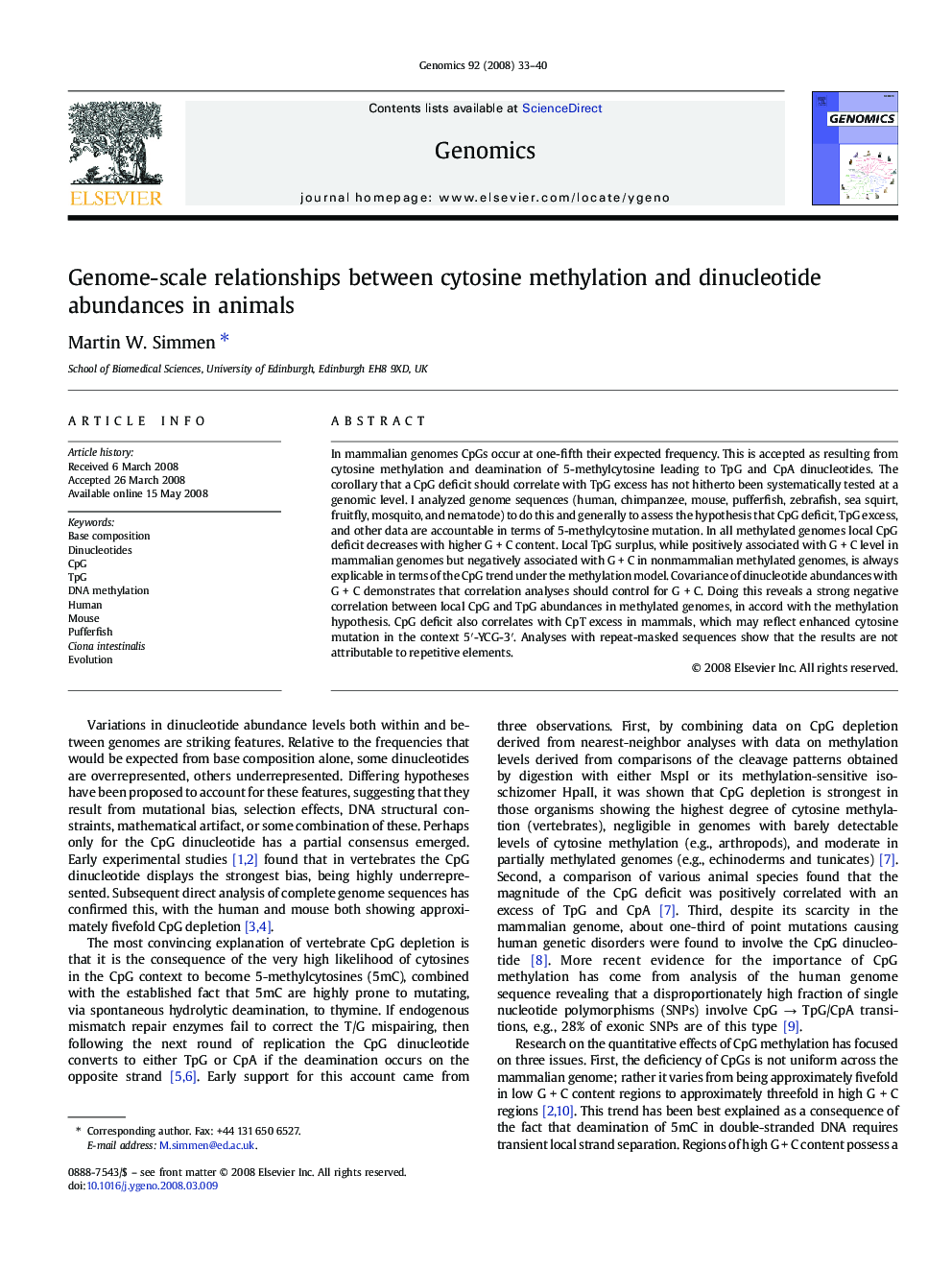| Article ID | Journal | Published Year | Pages | File Type |
|---|---|---|---|---|
| 2821437 | Genomics | 2008 | 8 Pages |
In mammalian genomes CpGs occur at one-fifth their expected frequency. This is accepted as resulting from cytosine methylation and deamination of 5-methylcytosine leading to TpG and CpA dinucleotides. The corollary that a CpG deficit should correlate with TpG excess has not hitherto been systematically tested at a genomic level. I analyzed genome sequences (human, chimpanzee, mouse, pufferfish, zebrafish, sea squirt, fruitfly, mosquito, and nematode) to do this and generally to assess the hypothesis that CpG deficit, TpG excess, and other data are accountable in terms of 5-methylcytosine mutation. In all methylated genomes local CpG deficit decreases with higher G + C content. Local TpG surplus, while positively associated with G + C level in mammalian genomes but negatively associated with G + C in nonmammalian methylated genomes, is always explicable in terms of the CpG trend under the methylation model. Covariance of dinucleotide abundances with G + C demonstrates that correlation analyses should control for G + C. Doing this reveals a strong negative correlation between local CpG and TpG abundances in methylated genomes, in accord with the methylation hypothesis. CpG deficit also correlates with CpT excess in mammals, which may reflect enhanced cytosine mutation in the context 5′-YCG-3′. Analyses with repeat-masked sequences show that the results are not attributable to repetitive elements.
